Marking rare tortoises
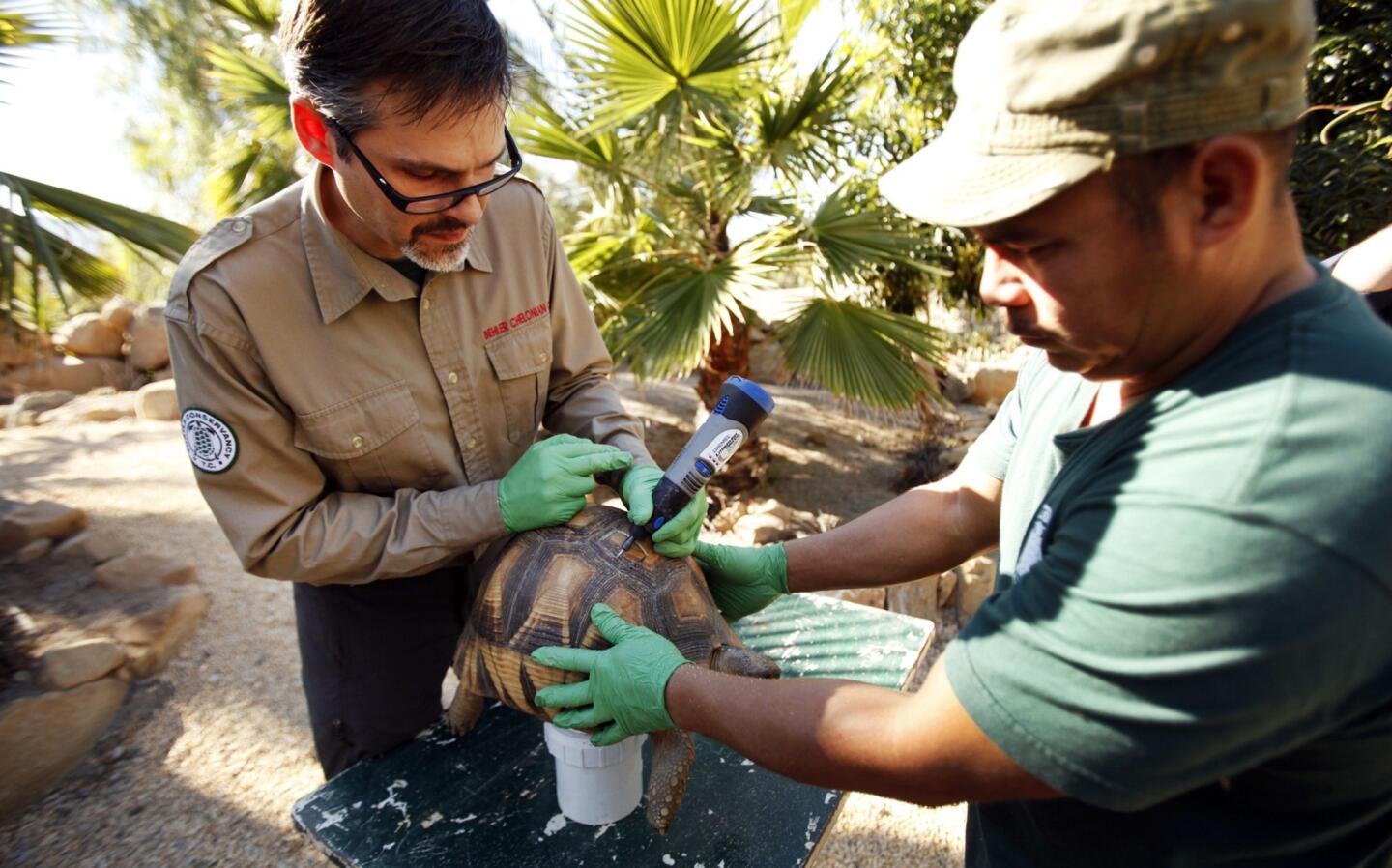
Paul Gibbons and Armando Jimenez of the Behler Chelonian Center use a drill tool to etch a code onto the shells of two ploughshare tortoises to reduce the risk that they’ll be stolen by poachers. (Al Seib / Los Angeles Times)
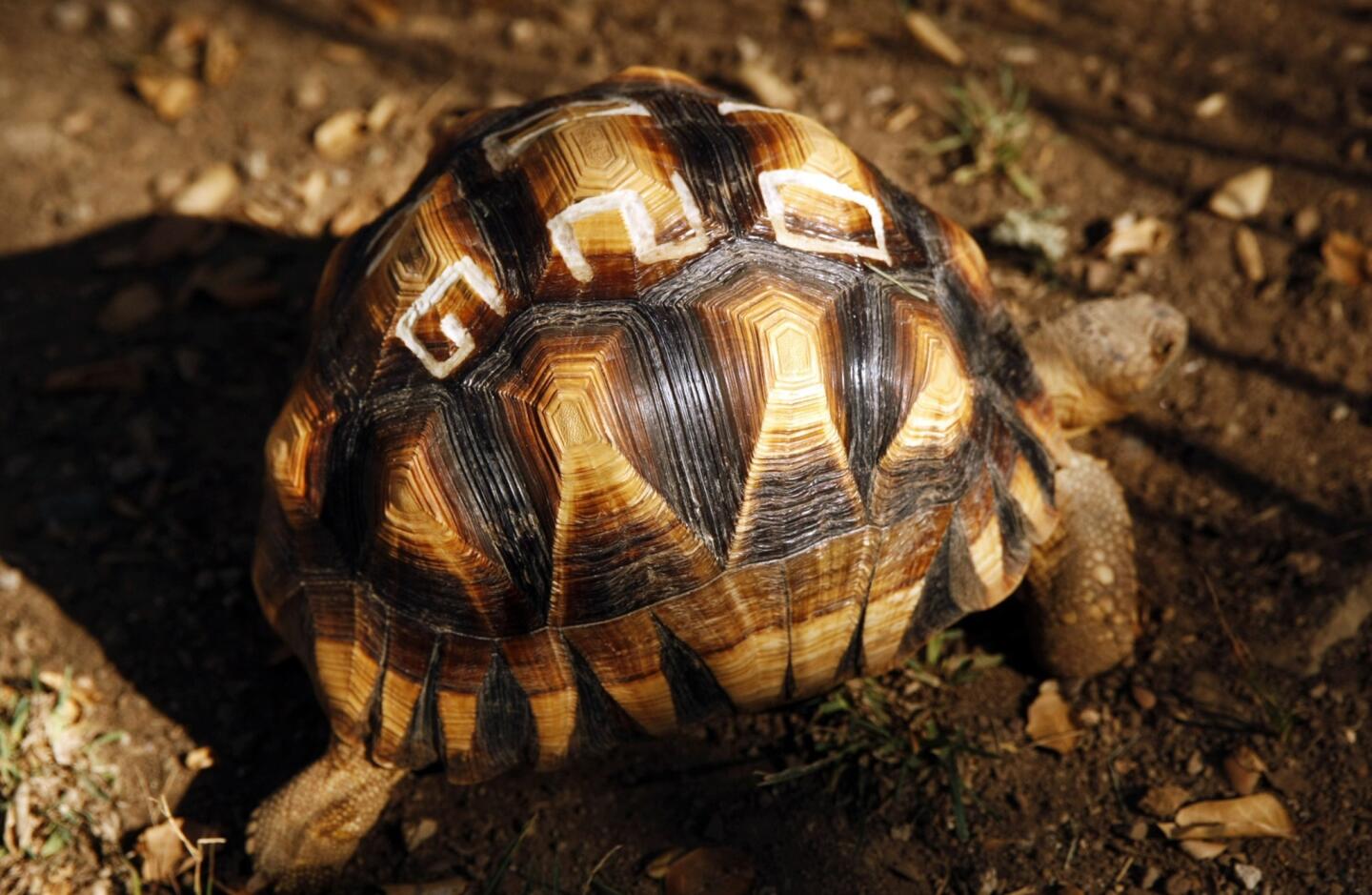
The block figures were placed at the top of the turtle¿s back, where it won’t interfere with the expansion of the shell, which grows at the edges. (Al Seib / Los Angeles Times)
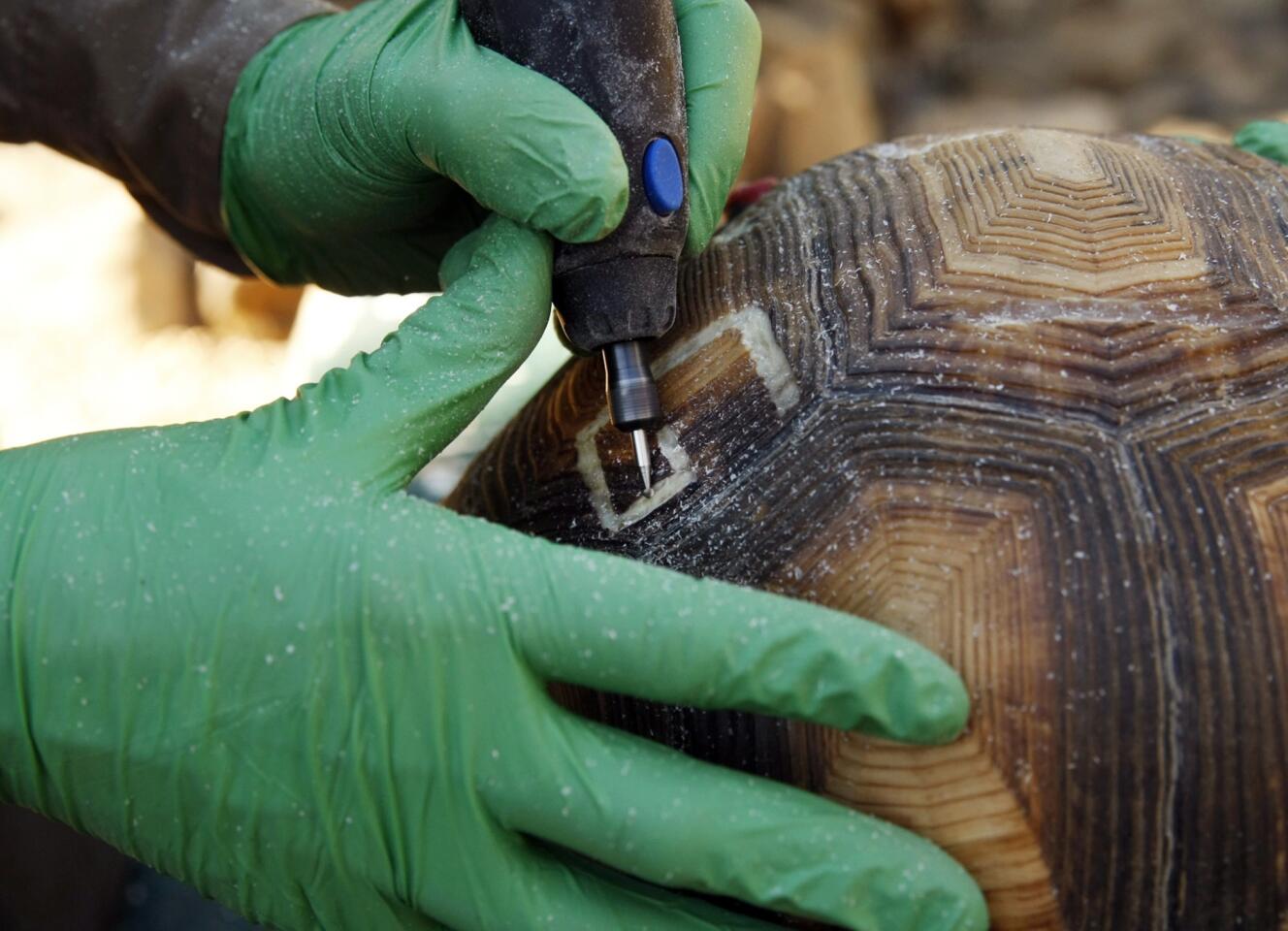
Dr. Paul Gibbons, managing director of the Turtle Conservancy’s Behler Chelonian Center in Southern California, adds an identification code to a tortoise’s back. The center aims to mark each of the 360 ploughshare tortoises in captivity and 300 in the wild. (Al Seib / Los Angeles Times)
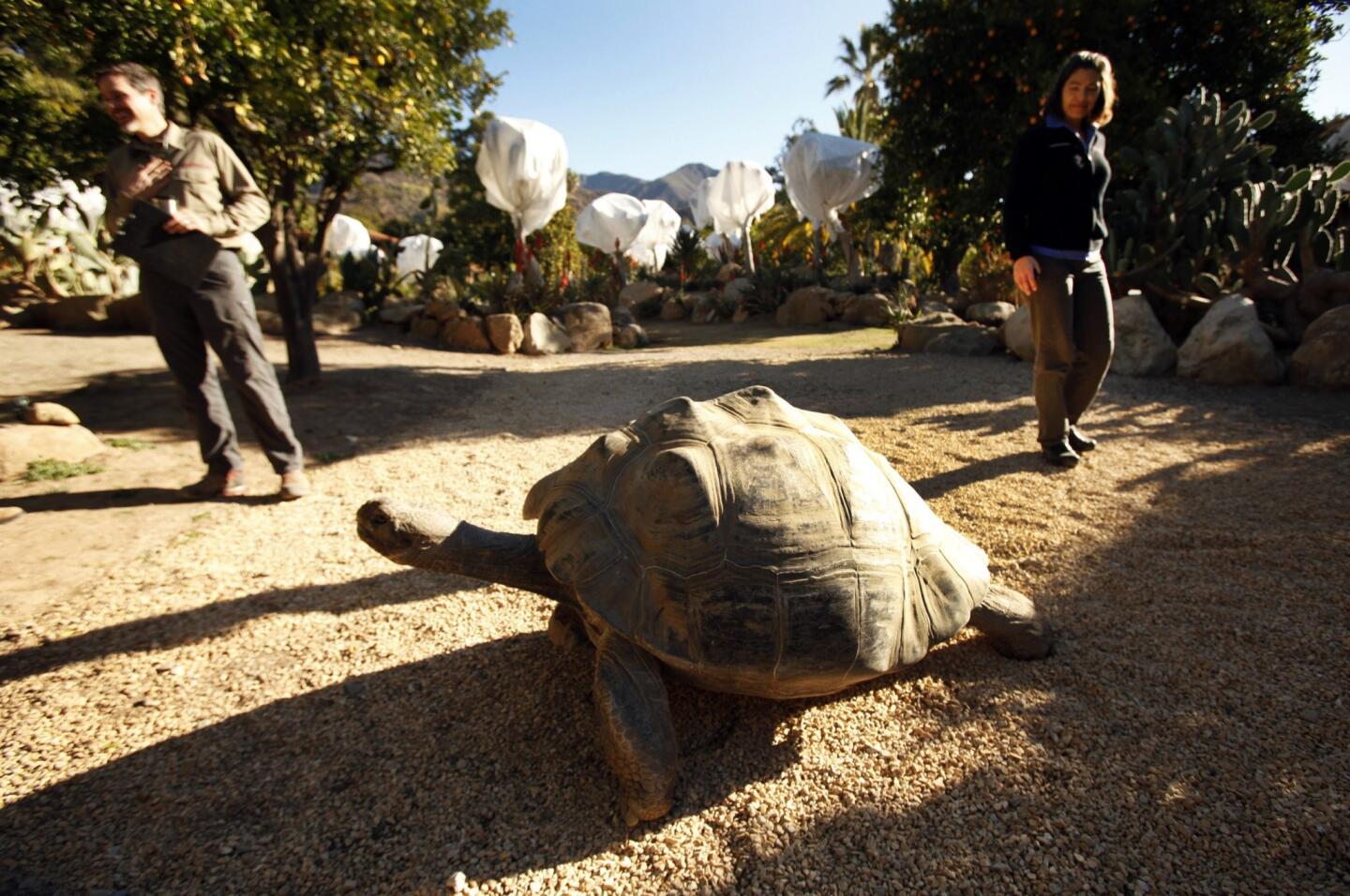
Daphnia is a newly rescued Galapagos tortoise at the Turtle Conservancy’s Behler Chelonian Center in Ventura County. (Al Seib / Los Angeles Times)
Advertisement
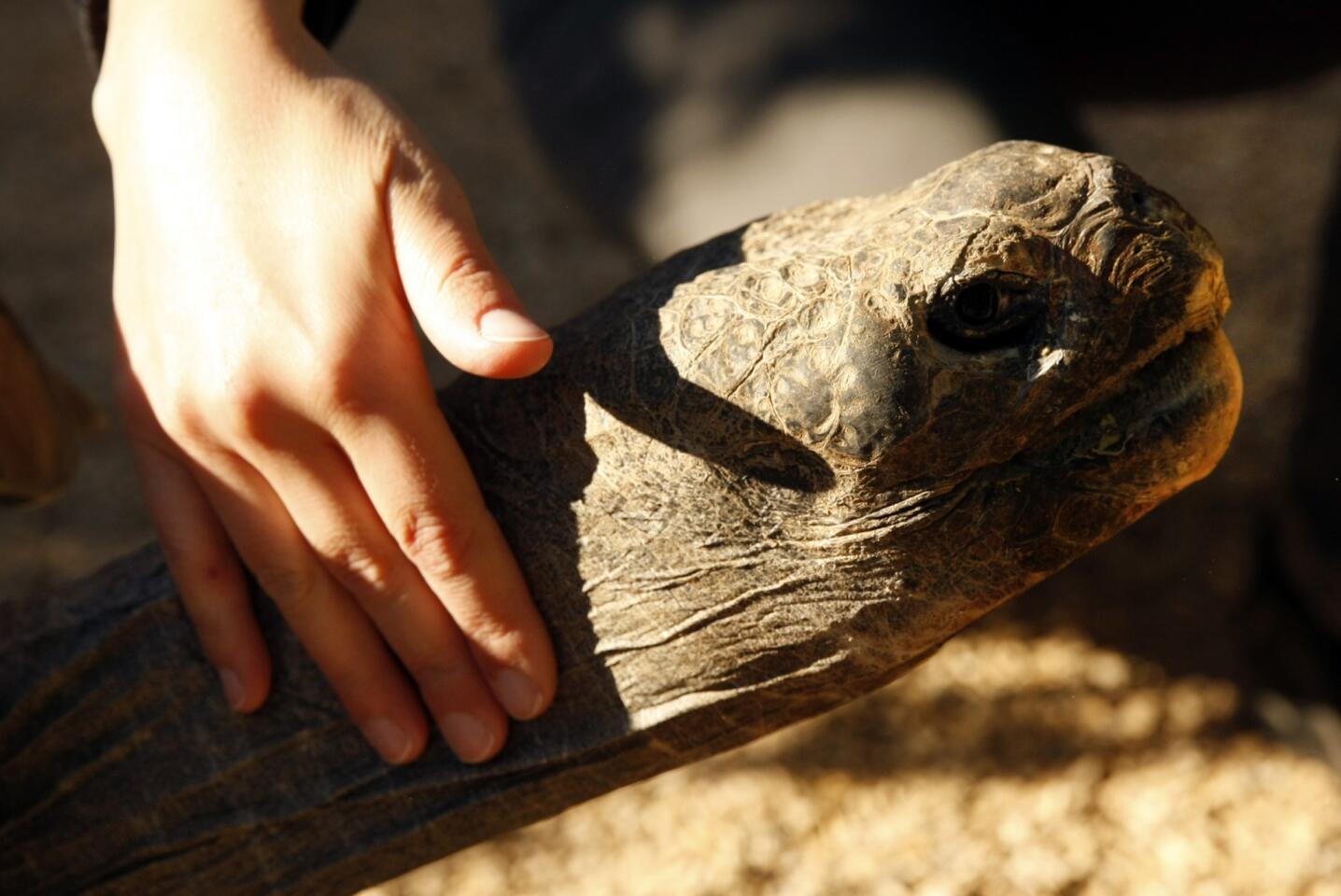
Daphne is a 40-year-old female giant Galapagos tortoise and is looking for a mate. (Al Seib / Los Angeles Times)
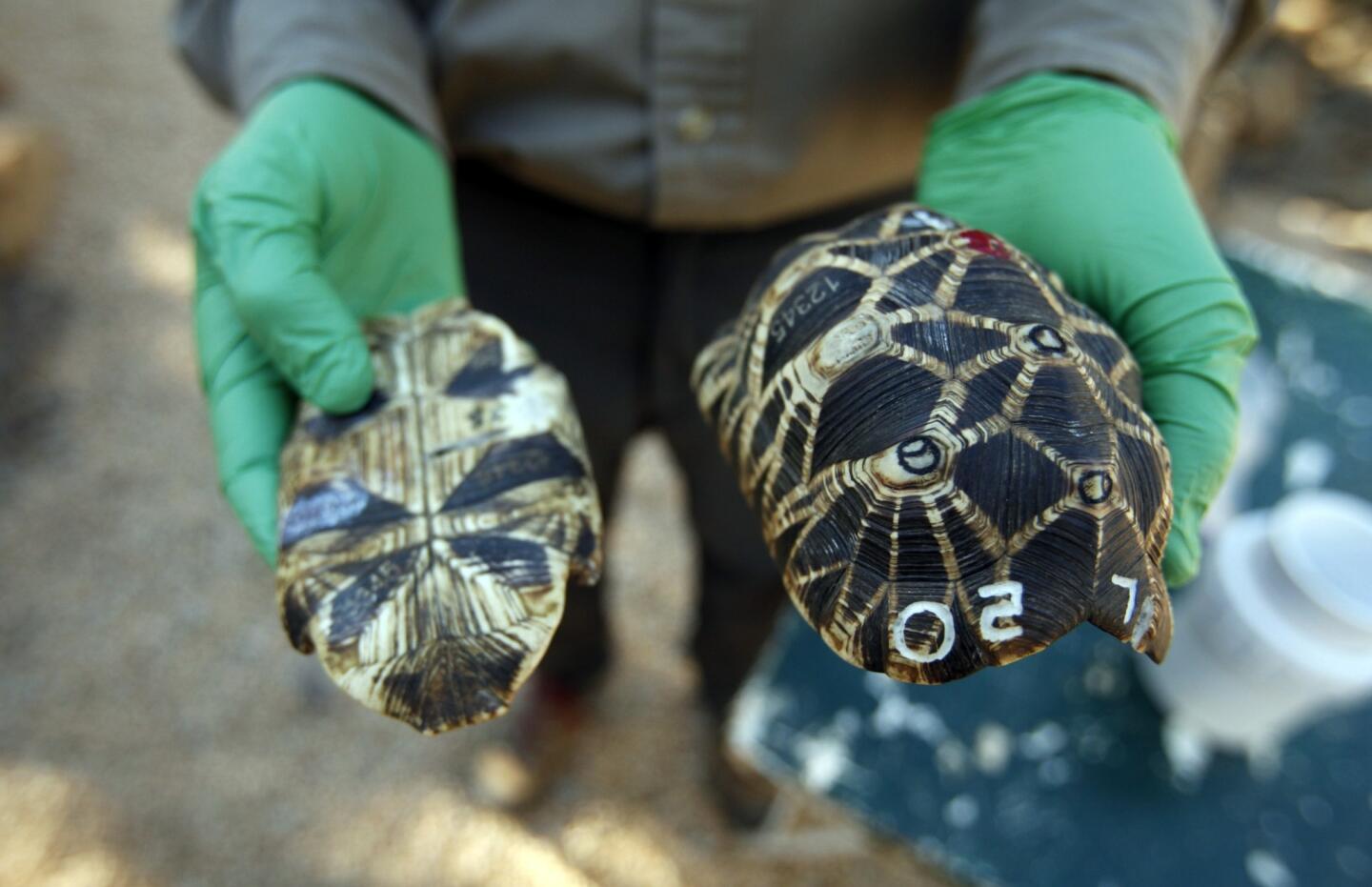
Dr. Paul Gibbons tested various ways to mark the domes or tortoises. (Al Seib / Los Angeles Times)
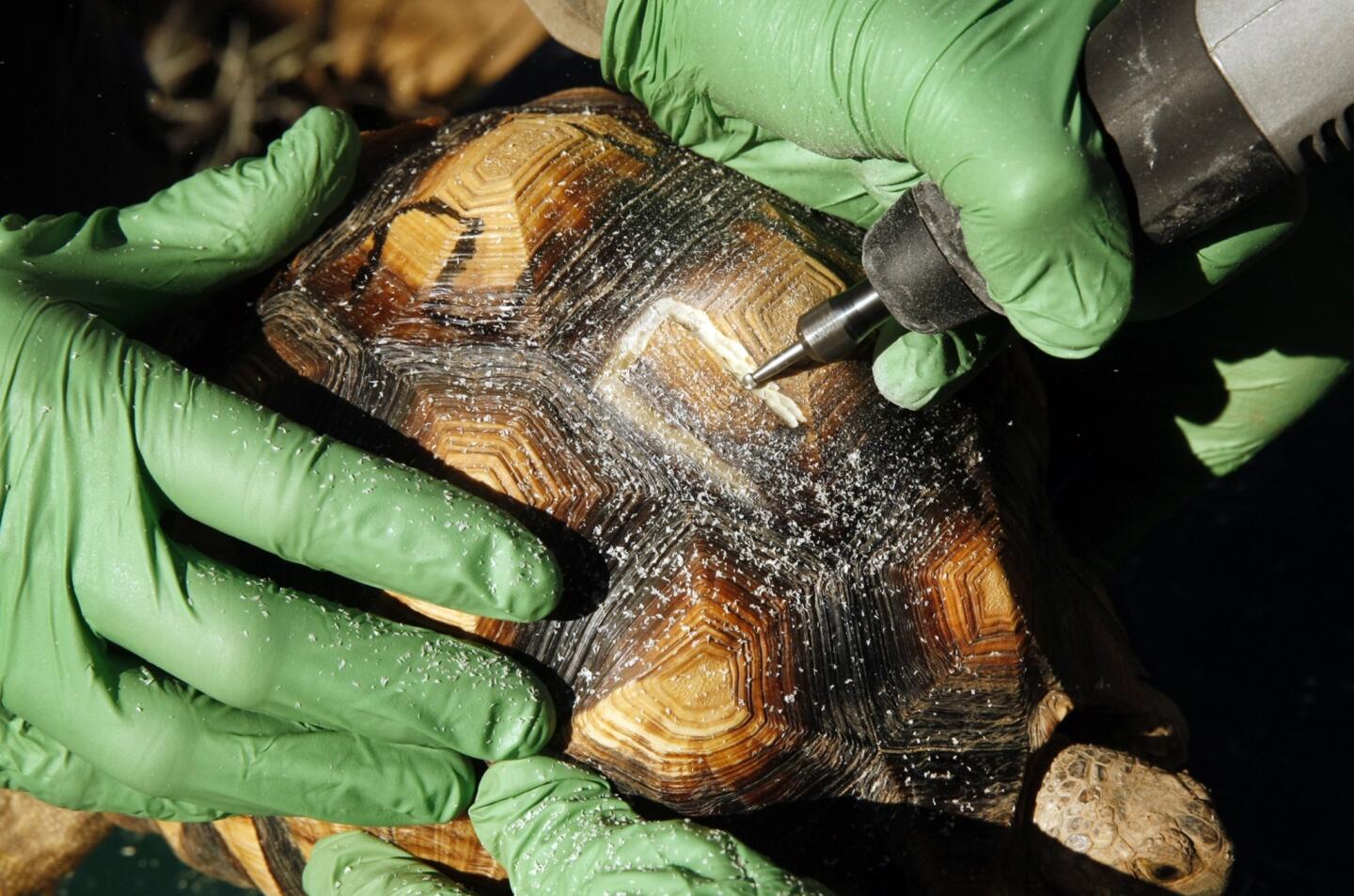
The two ploughshare tortoises marked Tuesday were flown in from Taiwan, where they were seized in 2008. (Al Seib / Los Angeles Times)
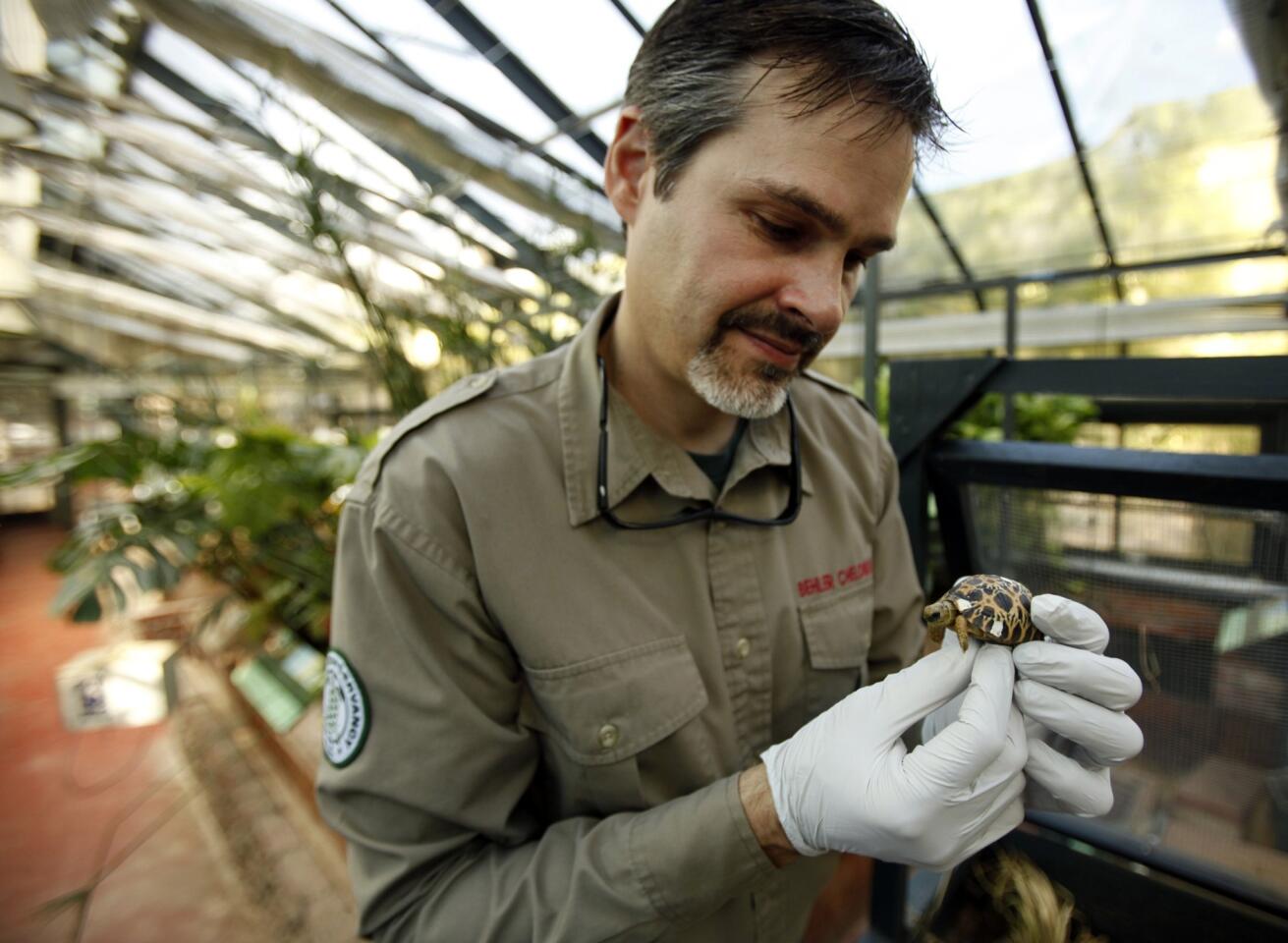
Dr. Paul Gibbons holds a radiated tortoise from Madagascar. (Al Seib / Los Angeles Times)
Advertisement
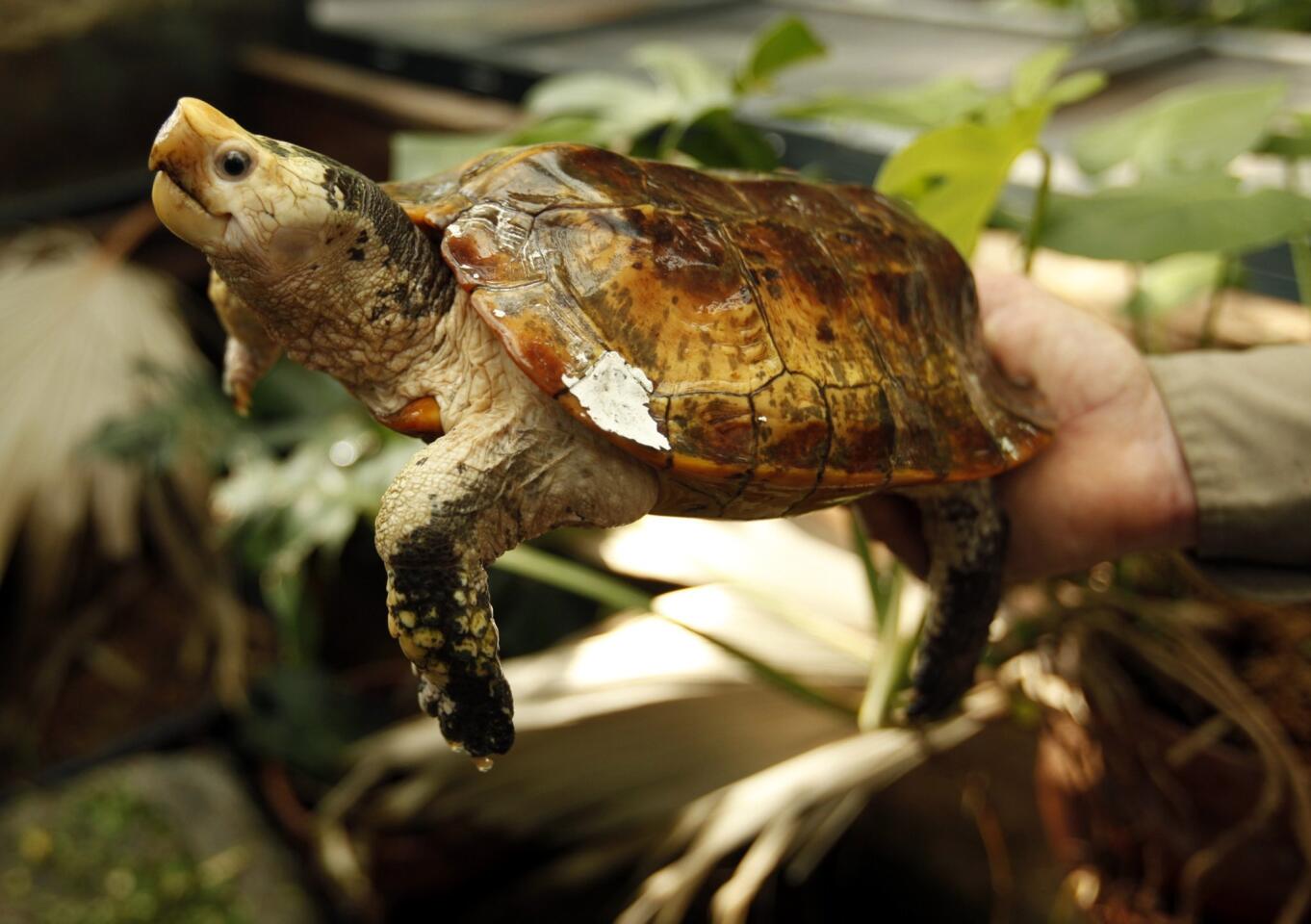
Two Sulawesi forest turtles, which are near extinction, were seized at LAX in February. (Al Seib / Los Angeles Times)
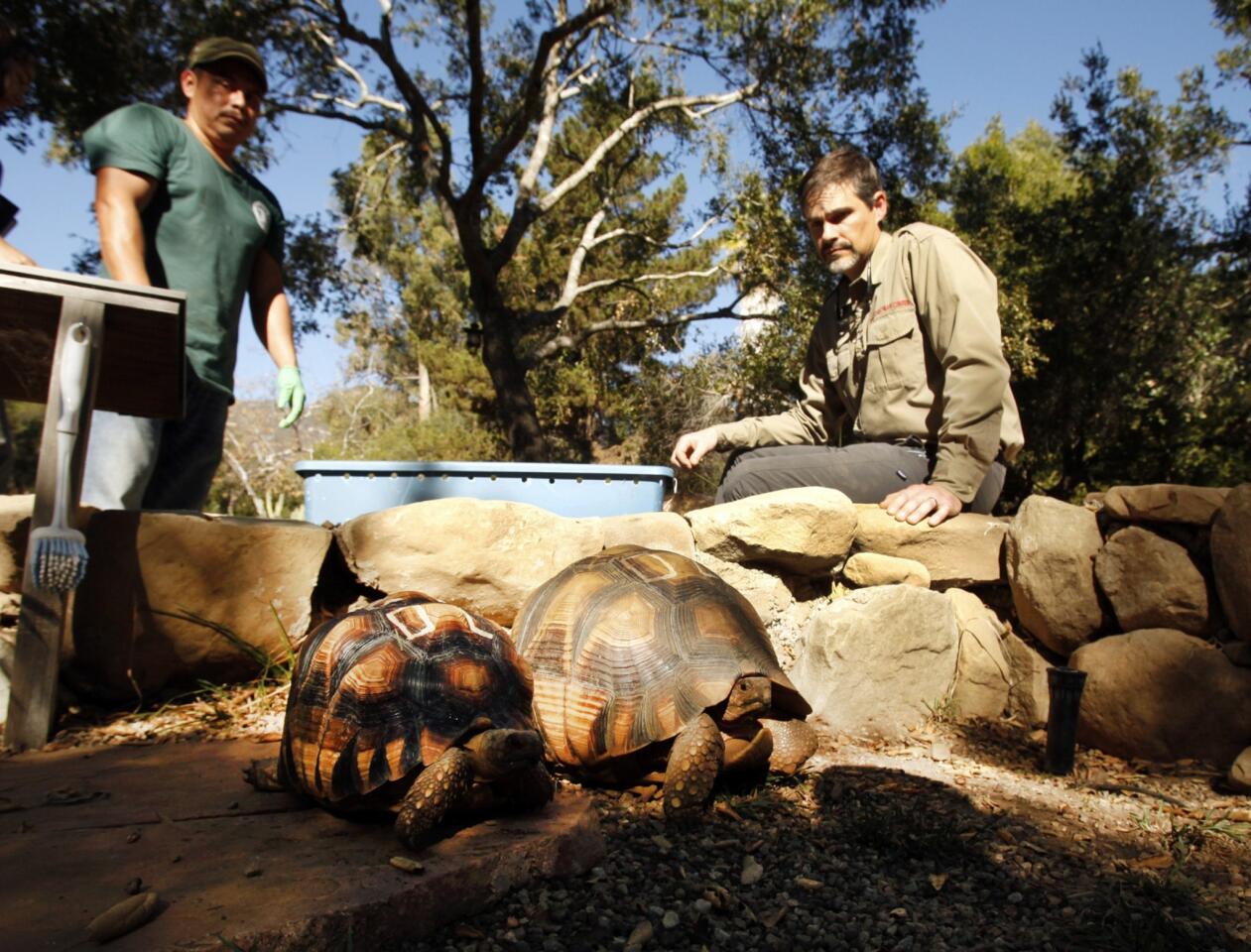
The ploughshare tortoises have been branded for life. (Al Seib / Los Angeles Times)



